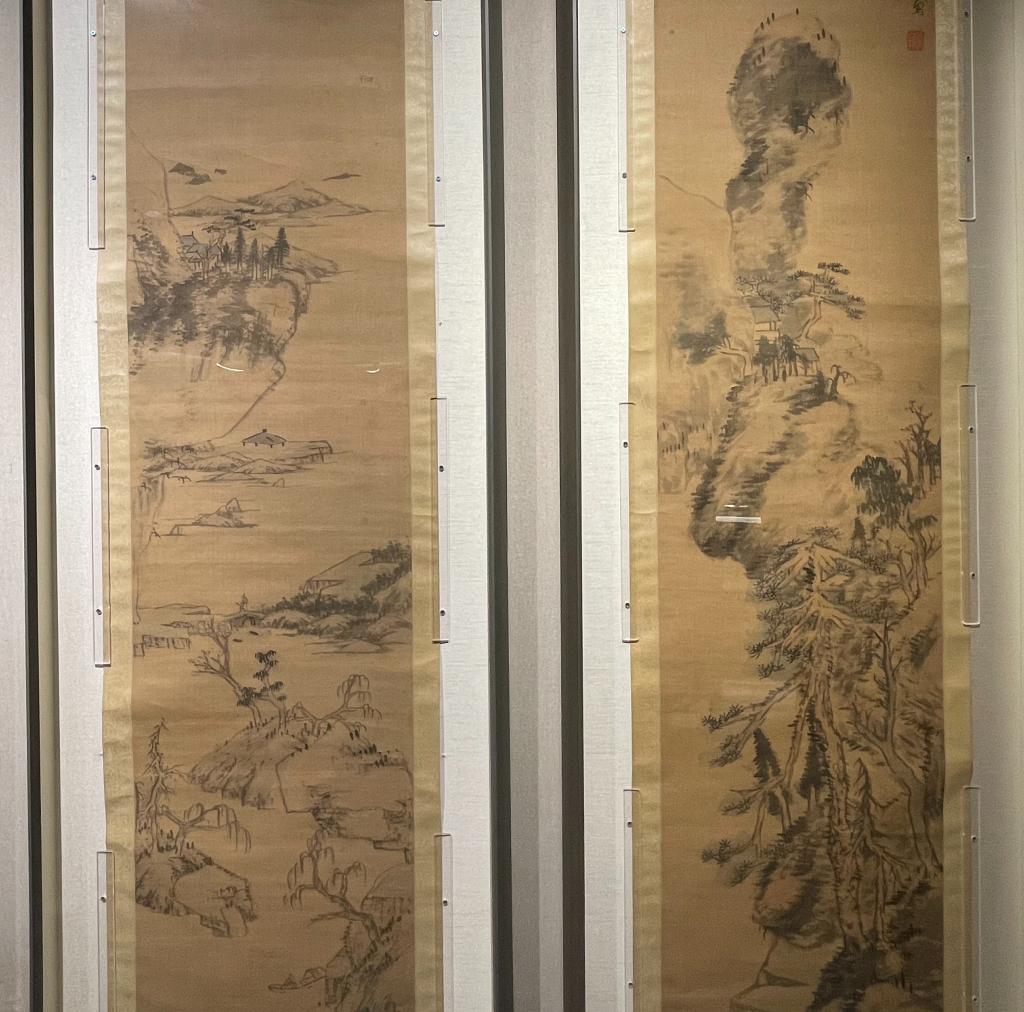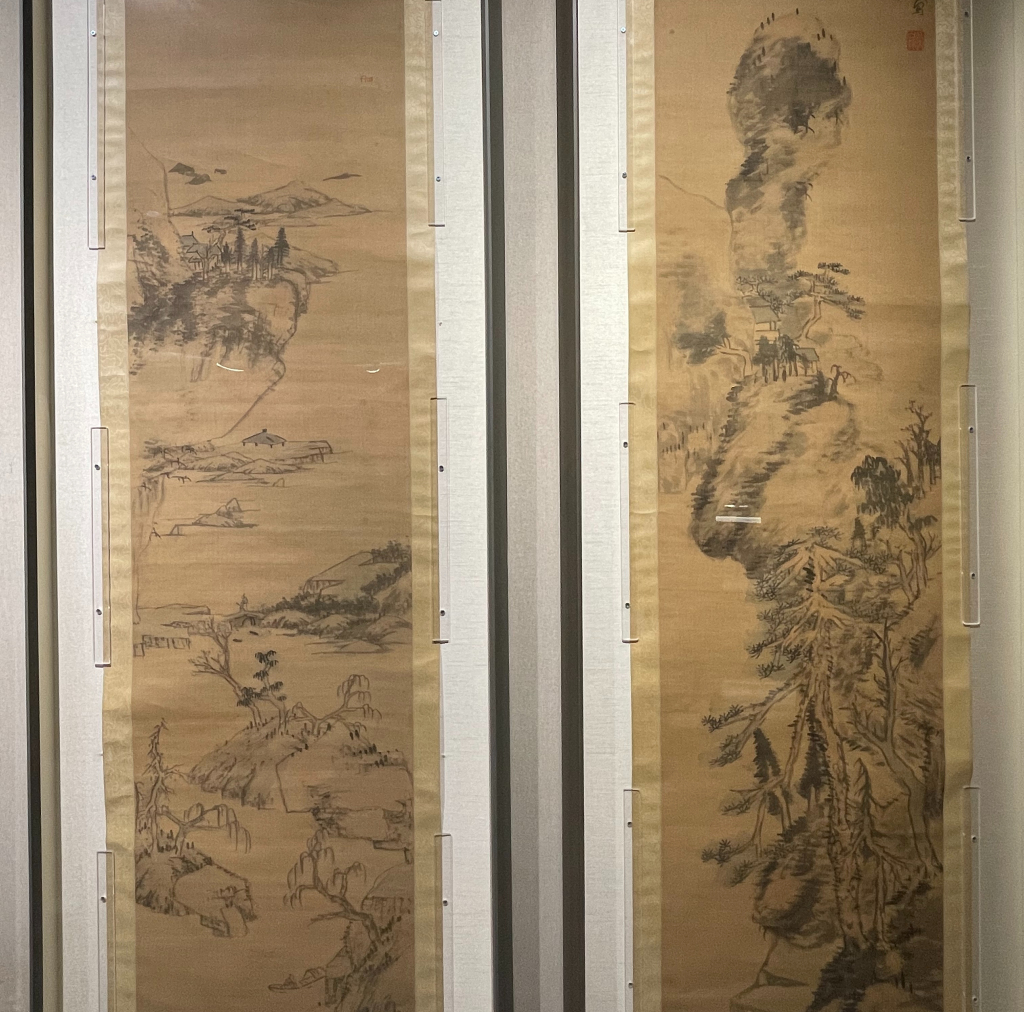
Between 1840 and 1949, approximately 1,500 calligraphers and painters created works in Shanghai, forming the "Shanghai School" of art. These prominent figures also initiated the modernization of Chinese art. The ongoing exhibition of art and calligraphy collections commemorating the 75th anniversary of the Shanghai Federation of Literary and Art Circles reviews the evolution of Shanghai's calligraphy and painting over the past century, as well as the development of Western influence and the integration of Chinese and Western art in the arts.
The elegant and refined landscape paintings by Bada Shanren, the majestic and vigorous landscape paintings by Huang Binhong, the magnificent landscape paintings by Ren Bonian, the 12-panel landscape paintings by the immortals celebrating longevity, and the powerful calligraphy by Kang Youwei... these are all masterpieces in the "Shanghai Splendor" exhibition at the Shanghai Art Hall, many of which are being exhibited for the first time.
Bada Shanren and Shitao's landscapes are exhibited together.
The exhibition "Shanghai Splendor" features more than 70 pieces (sets) of calligraphy and painting treasures, almost all of which have profound cultural heritage and artistic value, showcasing the diverse creative styles of artists from the Qing Dynasty to the Shanghai School.

Exhibition view of Bada Shanren's "Landscape Screen with Color" (Photo from The Paper).
Upon entering the first-floor exhibition hall, the most eye-catching works are undoubtedly those of Bada Shanren and Shitao, two of the "Four Monks of the Early Qing Dynasty." After the age of seventy, Bada Shanren's landscape paintings were influenced by Dong Qichang and Ni Zan, tending towards simplicity and tranquility. He established his own style with simple brushstrokes in landscape painting. The landscape screen painting by Bada Shanren exhibited this time uses the overlapping mountains and rocks to create a rhythmic "S"-shaped composition with peaks turning and ridges turning. The brushwork is concise, with the central brushstrokes used to depict the outline of the rocks. The brushwork is vigorous, with few texturing strokes. The brushwork reveals strong personal emotions and extraordinary artistic conception, with a unique style of vastness, roundness, tranquility, and openness.
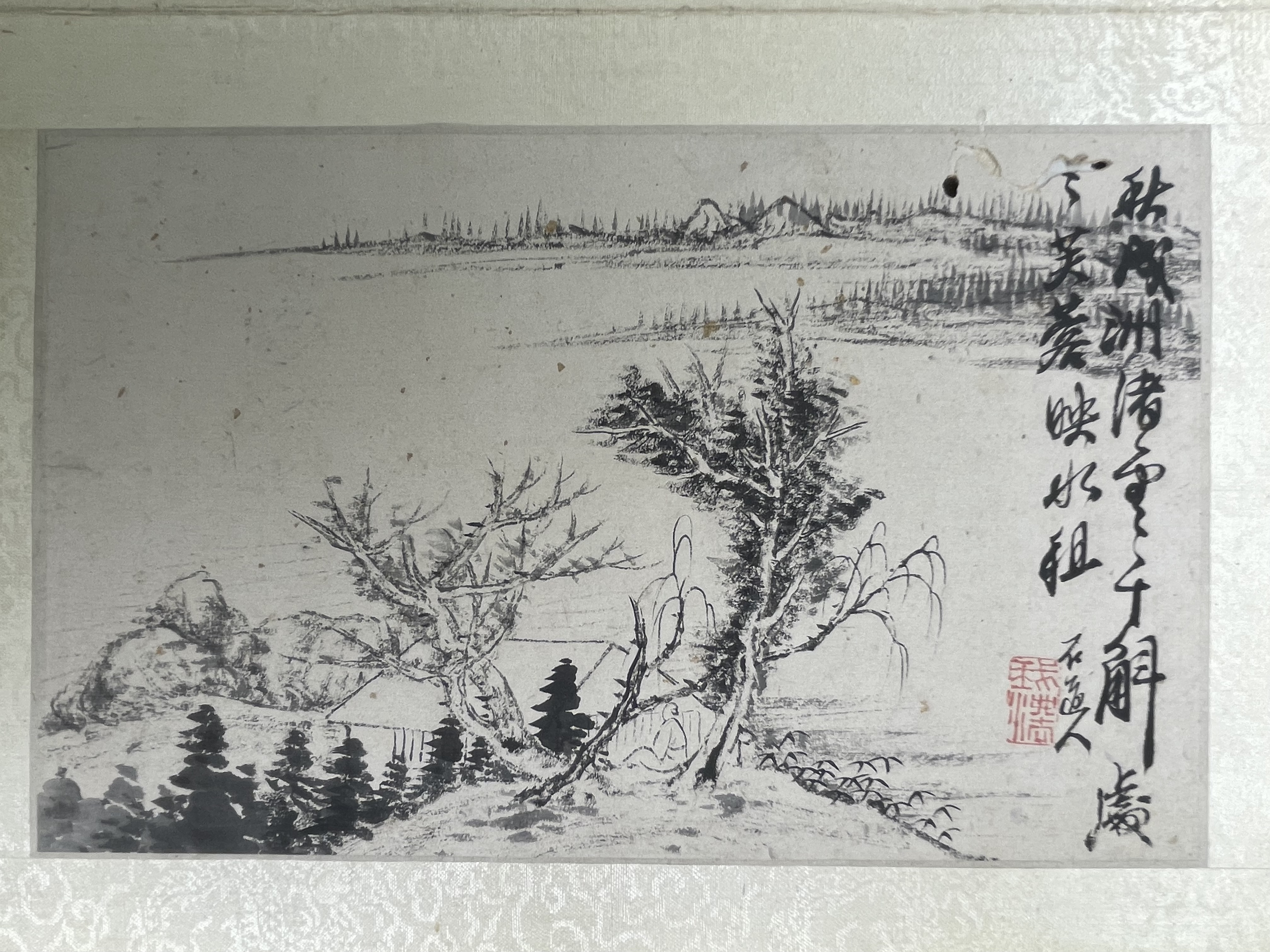
One of the landscape album leaves on display
The landscape album (12 pages) by Shi Tao is displayed in the central showcase of the exhibition hall. The brushwork is simple and elegant, and the composition often uses the "cropping method" to highlight the details of the landscape through close-up perspectives, breaking away from the formulaic expression of traditional panoramic layouts.
Rarely exhibited masterpieces by Ren Bonian and Huang Binhong
The most unmissable masterpiece in the entire exhibition is the twelve-panel screen of "Immortals Celebrating Longevity" by Ren Bonian, a master of late Qing Dynasty art, painted in meticulous brushwork and heavy color on gold paper. It is also a treasure of the Shanghai Artists Association, measuring 206.8 cm in height and 714 cm in total width.
This painting blends elements of Ming and Qing literati painting with Western painting techniques, showcasing the eclectic nature of the Shanghai School of art. It depicts 46 different figures, including the Queen Mother of the West, palace maids, and various immortals. These figures are meticulously rendered with fluid and refined lines, fully embodying Ren Bonian's early "nail-head drawing" technique, characterized by its unrestrained and vigorous brushwork. In addition to the numerous figures, the artist skillfully utilizes mountains, rocks, unusual trees, pavilions, and abundant seawater and clouds to achieve spatial transformation and rich perspective.
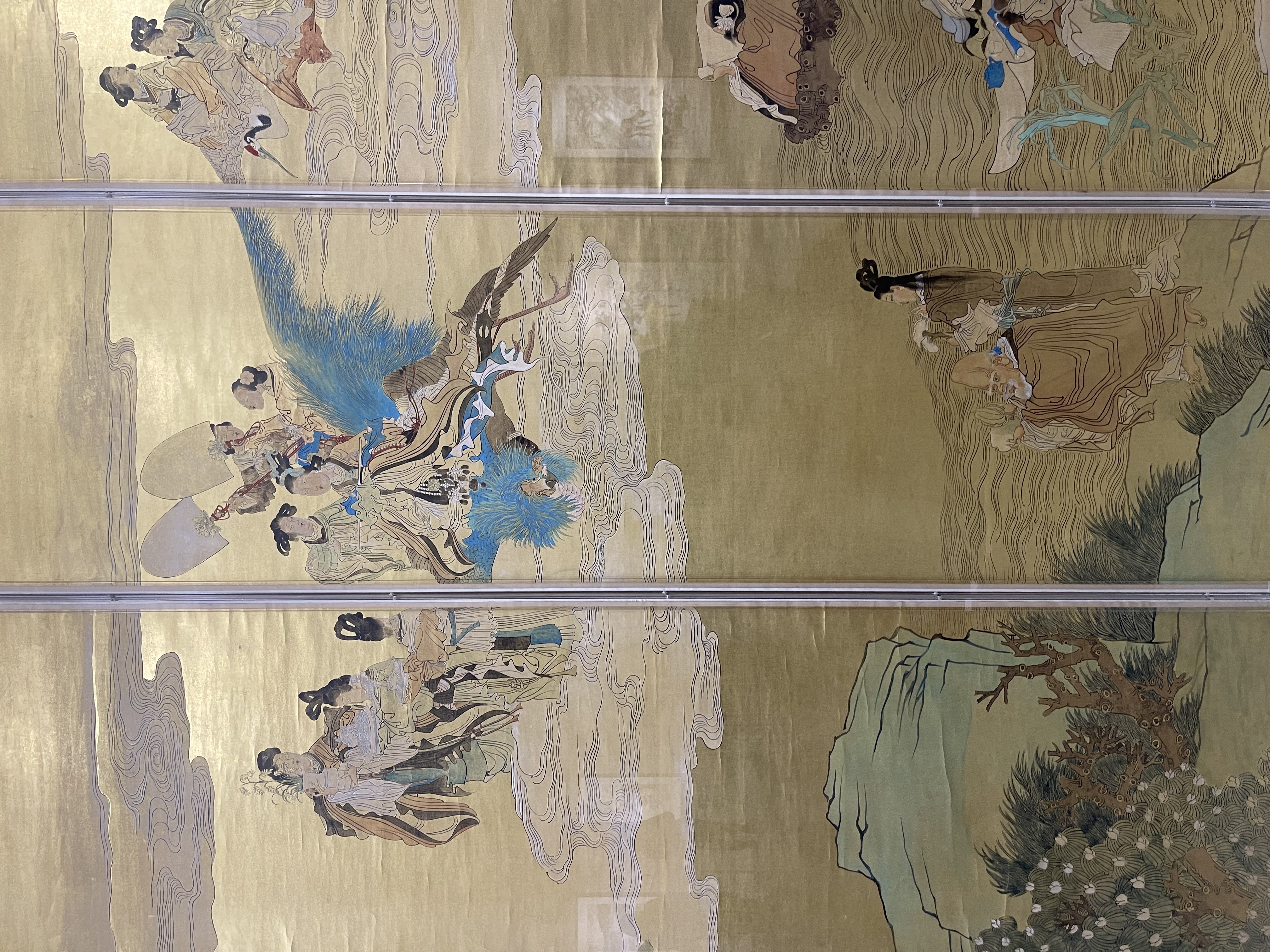
A partial view of Ren Bonian's twelve-panel meticulous brushwork and heavy color painting "Immortals Celebrating Longevity" on gold-flecked paper. (Photo from The Paper)
"Ren Bonian, as an important representative painter of the Shanghai School, has high artistic attainments in landscape, flower-and-bird, and figure painting, with figure painting being particularly outstanding. The fact that he used meticulous brushwork to create such a large gold-flecked paper work demonstrates Ren Bonian's profound skill and technique in brush and ink," said Tong Yanfang, vice president of Xiling Seal Society, at the scene. He added that in addition to its inherent artistic value, the origin of the twelve-panel screen painting "Immortals Celebrating Longevity" is also quite legendary.

Ren Bonian's twelve-panel gold-leaf meticulous brushwork and heavy color painting "Immortals Celebrating Longevity" is on display.
According to reports, in the early 1950s, Qian Jingtang, a renowned art appraiser and collector, was out for breakfast when he passed an antique shop. He saw someone scraping gold powder from a gold-leaf painting. Although the painting bore a forged signature of "Tang Yin," upon closer inspection, he recognized it as a work by Ren Bonian. The shop owner explained that due to a sluggish market, the paintings and calligraphy were unsellable, and he was planning to scrape off the gold powder to melt down and sell. This priceless treasure was almost lost! Qian Jingtang immediately offered 400 yuan to buy all 12 panels. Tang Yun, then director of the exhibition department of the Shanghai Artists Association, learned of this and rushed to inspect the work, confirming it was indeed a representative work of Ren Bonian. Ultimately, Qian Jingtang sold the "Immortals Celebrating Longevity" painting to the Shanghai Artists Association at a friendly price, thus preserving this priceless treasure.

A partial view of Huang Binhong's "Pine Trees in Ten Thousand Valleys"
Another masterpiece on display is Huang Binhong's "Ten Thousand Pines in the Wind," created in 1954, a late work by this artistic master. The painting depicts the myriad pines and winds from Xunyang Chaisang, the hometown of Tao Yuanming, to Tangkou in Huangshan, showcasing a breathtaking panorama. The work's complex structure and layers are not merely a glimpse of Tangkou in Huangshan, but a condensed essence of the landscape spanning 300 kilometers. Huang Binhong visited Huangshan nine times throughout his life, possessing a profound understanding of its scenery. Even at the age of ninety-two, despite suffering from severe eye disease, he still managed to sketch "Tangkou in Huangshan" from memory (which sold for 345 million yuan at China Guardian in 2017), and "Ten Thousand Pines in the Wind" is a concentrated embodiment of his artistic achievements in his later years.
From Xu Gu to Liu Haisu, Lin Fengmian, and Wang Quchang
At the exhibition, The Paper Art observed that, in addition to large-scale works, the exhibition hall featured more representative masterpieces of the Shanghai School of Art and its influences over the past century. The works, by nearly 60 renowned artists including Wu Changshuo, Qi Baishi, He Tianjian, Zhu Qizhan, Wu Hufan, Xu Beihong, Liu Haisu, Wang Geyi, Qian Shoutie, Feng Zikai, Zhang Daqian, Guan Liang, Lin Fengmian, Zhang Dazhuang, Fu Baoshi, Lu Yanshao, Tang Yun, Lai Shaoqi, Cheng Shifa, Chen Peiqiu, Kang Youwei, Shen Yinmo, and Wang Quchang, systematically reviewed the evolution of Shanghai's calligraphy and painting over the past century and the development of Western influence and the integration of Chinese and Western art in the arts.
The works of Xu Gu, a great artist of the late Qing Dynasty, are not numerous. The "Six Harmonies in Spring" by Xu Gu exhibited this time fully embodies one of the important characteristics of Shanghai School of art, namely, the skillful combination of folk art techniques and themes with traditional literati painting.

Partial view of Xu Gu's "Six Harmonies in Spring"

Qi Baishi's "Red Morning Glory" and "Lotus" on display
Pu Hua's "Flowers" features bold and unrestrained brushstrokes and charming colors, and is inscribed with "Imitated by Ebishanren in cursive calligraphy." Wu Changshuo's "Blue Buddha" with its strong epigraphic style, as well as Qi Baishi's "Red Morning Glory" and "Lotus," all provided creative inspiration and models for the Shanghai School of Calligraphy and Painting.

Partial view of Wu Changshuo's "Blue Buddha"

Partial view of Pu Hua's "Flowers"
Works by representative masters of modern and contemporary art history, such as Liu Haisu, Wu Hufan, and Lin Fengmian, showcase the Shanghai School of art's inclusive spirit, transcending East and West. Lin Fengmian, as a representative figure of the fusion of Chinese and Western styles, introduced Western modernist concepts into traditional Chinese painting, creating a completely new visual expression. Works exhibited include "Girl," among others.
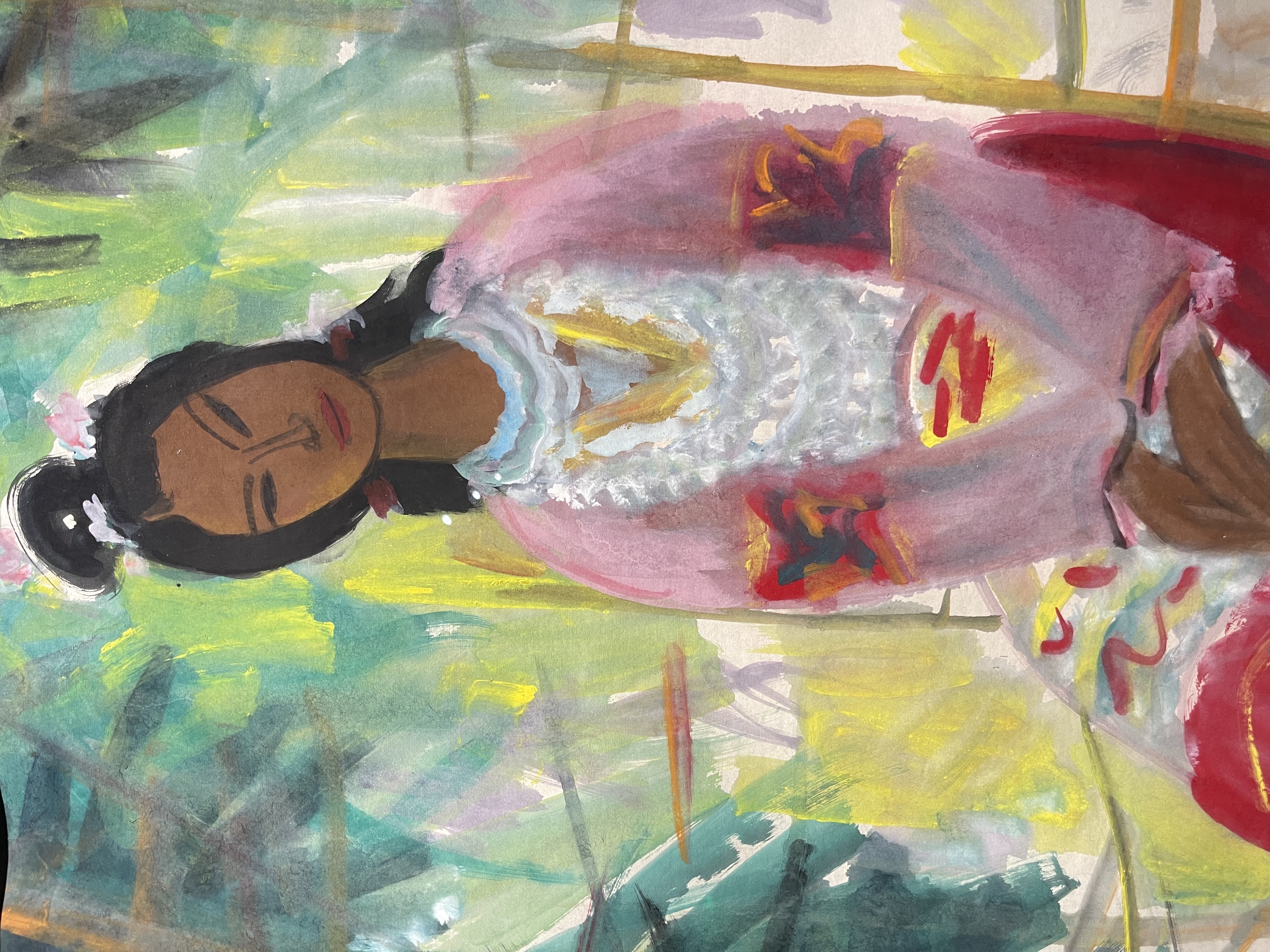
Lin Fengmian's "Girl"
The Guan Liang paintings of opera figures on display are characterized by their simple and unadorned brushwork and strong folk flavor. They are quite interesting to compare with the Guan Liang works currently on display at the Zhu Qizhan Art Museum in Shanghai, in the exhibition "Waiting for the Stage - Chinese Opera Themed Art Exhibition".
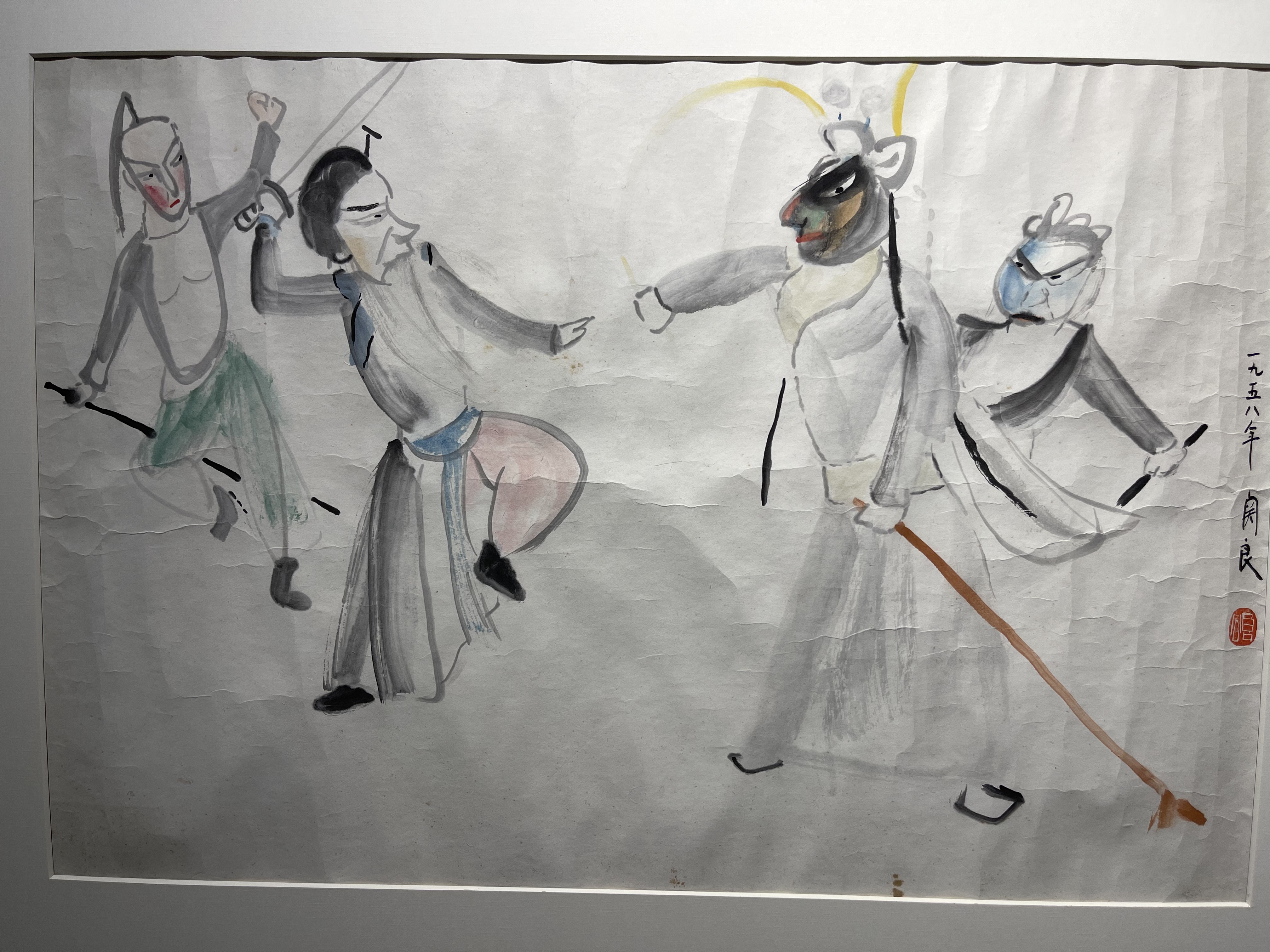
Guan Liang's Opera Figure Paintings

Partial view of Wu Hufan's painting
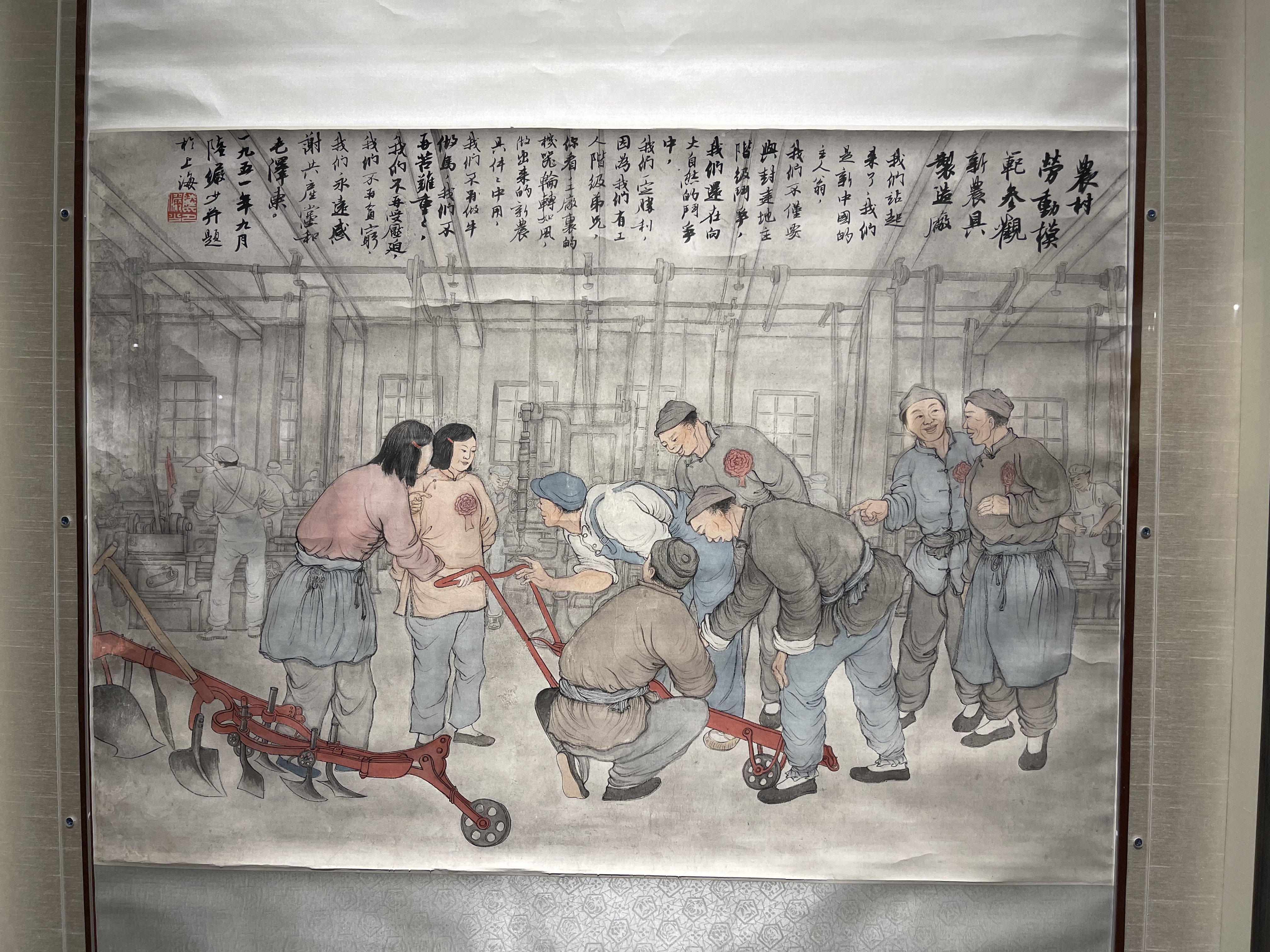
Lu Yanshao's paintings
The exhibited calligraphy works include masterpieces by Kang Youwei, Shen Yinmo, Wang Quchang, Xie Zhiliu, and Cheng Shifa, most of which are from the collection of the Shanghai Calligraphers Association. The Shanghai Calligraphers Association's predecessor was the Shanghai Chinese Calligraphy and Seal Carving Research Association, established in April 1961, the first calligraphy organization in New China. Shen Yinmo, the association's first chairman, had a deep connection with the Shanghai Museum. He previously worked for the Shanghai Municipal Cultural Relics Management Committee and contributed to the museum's collection of calligraphic works by painters and calligraphers throughout history. The Shanghai Calligraphers Association has integrated the two major schools of calligraphy in modern history—stele and copybook styles—and has made significant contributions, especially in promoting the revival of the copybook style.

Partial view of Kang Youwei's calligraphy

Wang Quchang's calligraphy

Shen Yinmo
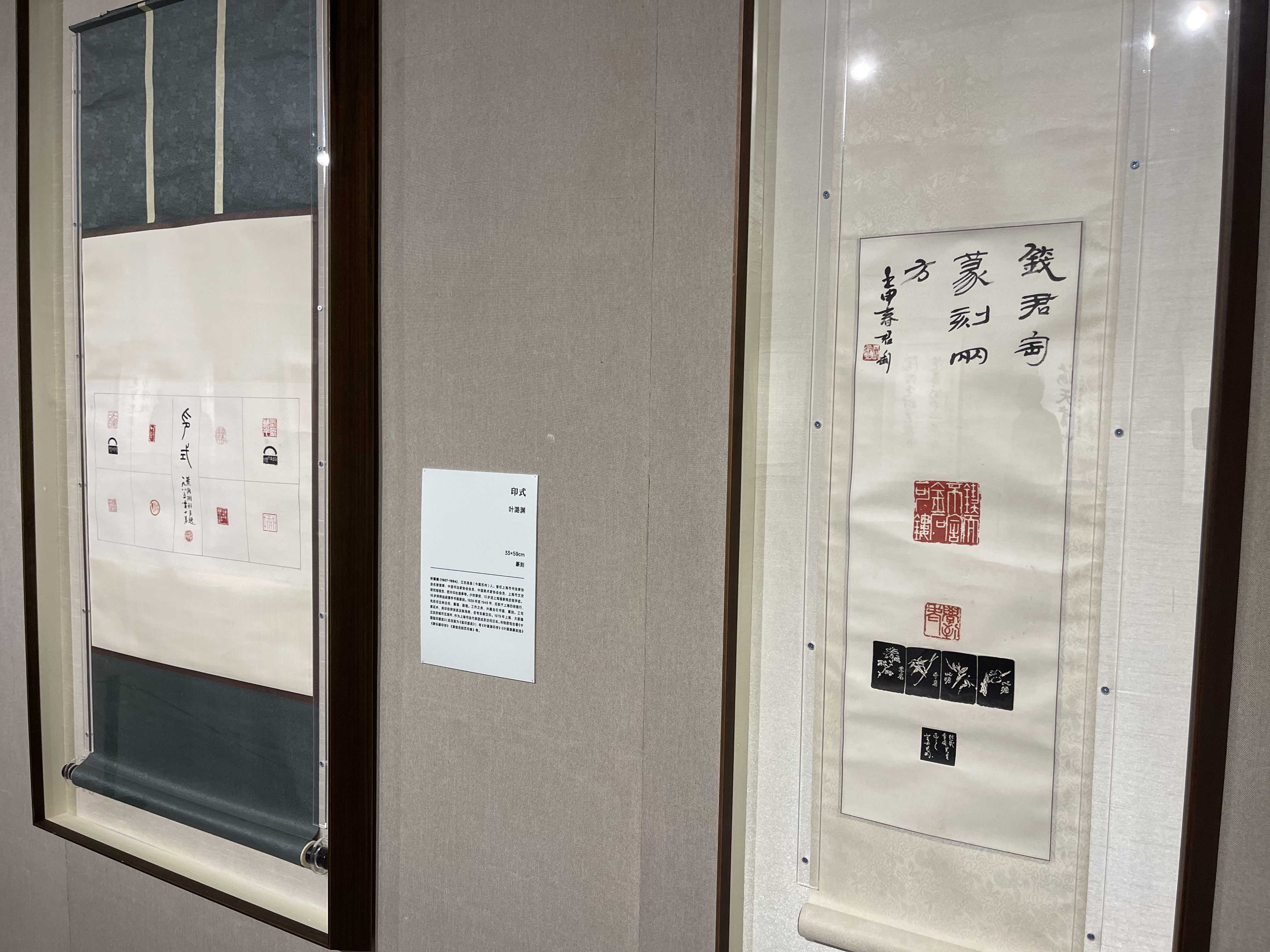
Exhibition of seal engravings
Between 1840 and 1949, approximately 1,500 calligraphers and painters created works in Shanghai, forming the "Shanghai School" of art. These prominent figures also initiated the modernization of Chinese art. This exhibition, through an organization of the Shanghai Federation of Literary and Art Circles' art collection, combines historical analysis with academic depth, systematically reviewing the evolution of Shanghai's calligraphy and painting over the past century and the development of Western influence and the integration of Chinese and Western art in the arts.
"Looking at the explorations of these artistic predecessors in the long river of history, one can feel how difficult it was. The formation and rise of the Shanghai School of painting is closely related to the formation and rise of the city of Shanghai, and the rise of the city of Shanghai is closely related to China's modernization process," said Chen Xiang, vice chairman of the Shanghai Artists Association.
This exhibition, hosted by the Shanghai Federation of Literary and Art Circles and organized by the Shanghai Artists Association and the Shanghai Calligraphers Association, will run until November 29. Visitors need to make an appointment in advance by scanning the QR code on the official WeChat accounts of the Shanghai Artists Association and the Shanghai Calligraphers Association.
